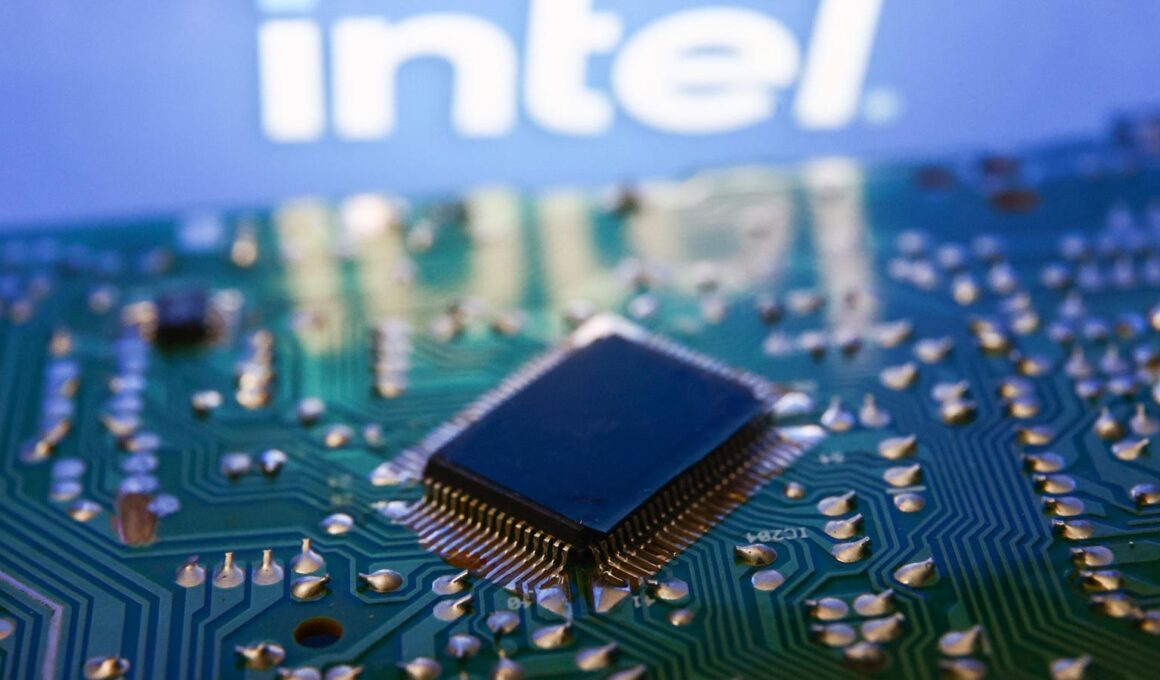Topline
Intel shares nosedived Friday after the American stalwart announced an array of bad news including hefty layoffs and disappointing earnings, setting the chipmaker on track for its worst day in decades and dragging the entire market down as it ignites a massive selloff of global semiconductor stocks.
Intel shares plummeted amid a broader chip stock rout on Friday.
Key Facts
Intel shares fell nearly 30% on Friday morning after the company said it was cutting more than 15% of its workforce—some 15,000 jobs—scrapped its dividend and reported disappointing earnings, including a loss of $1.6 billion in its second quarter and a pessimistic forecast for its third.
The plunge continues a downward streak for Intel from the day before, when shares were down 5.5% at market close, and if the losses hold, the storied U.S. chipmaker is on course for its worst selloff since 2000.
The Intel selloff dragged down global semiconductor stocks, with Asian heavyweights including Samsung Electronics, Taiwan Semiconductor Manufacturing Company (TMSC) and SoftBank Group, parent of British chip designer Arm Holdings, respectively down 4.2%, 5.9% and 8% at market close in Seoul, Taipei and Tokyo.
South Korea’s SK Hynix and Japan’s Tokyo Electron, which supply giants like Nvidia, Intel and Samsung with memory chips and machinery, fared worse, with the former shedding 10.4% in its worst daily drop in 13 years and the latter plunging 12% by market close.
Shares of European chipmakers also fell, with Dutch firm ASML, which manufactures tools required to make advanced computer chips, down nearly 10% during trading hours in Amsterdam and Nasdaq-listed Arm Holdings dropping nearly 10% on Friday morning after closing nearly 16% down Thursday after it issued a conservative forecast, the company’s worst day in four years.
U.S. firms look set for a bruising day as well, with chipmaking giant Nvidia down nearly 6% shortly after markets opened on Friday—Nvidia closed nearly 7% down on Thursday—and other firms like Broadcom, KLA Corp, Qualcomm, Lam Research, Applied Materials and Marvell similarly down between 2% and 4%.
Key Background
The last few weeks have been a tumultuous time for tech stocks as major firms issue their earnings reports for the second quarter and outline forecasts for the rest of the year. Investors have been particularly attuned to how companies’ investments in artificial intelligence are paying off amid growing fears the industry is pumping billions of dollars into developing a technology that largely lacks a clear path to profitability in the near or more distant future, if at all. These fears, combined with soaring capital expenditure on AI infrastructure and lackluster earnings reports from industry titans like Amazon and Microsoft, have sparked broad selloffs affecting both giants and smaller industry figures. As key suppliers of hardware needed to sustain the AI ecosystem, these fears have also ignited selloffs among chipmakers. Reports of looming U.S. trade restrictions on crucial semiconductor technology designed to maintain Washington’s edge over Beijing in the strategic area have also moved markets, sparking rallies or routs depending on the nature of the suspected restrictions.
Tangent
Big tech stocks also sank as markets opened Friday, though the outlook of the “magnificent seven”—a cohort of valuable tech companies including Tesla, Amazon, Meta, Alphabet, Microsoft, Apple and Nvidia—was mixed. Shares of Meta, which closed nearly 5% higher the day before, were down nearly 4% on Friday, Tesla shares were down 2.8%, Microsoft shares were down 3% and Google parent Alphabet were down 3.4%. Amazon shares were down more than 12%. The sharper fall continues the e-commerce and cloud computing giant’s downward trajectory from the day before, when it shed 1.6% at market close and reported disappointing forecasts for the third quarter. Apple bucked the general downward trend among tech stocks, rising by 1.4%.
Get Forbes Breaking News Text Alerts: We’re launching text message alerts so you’ll always know the biggest stories shaping the day’s headlines. Text “Alerts” to (201) 335-0739 or sign up here.
Further Reading









